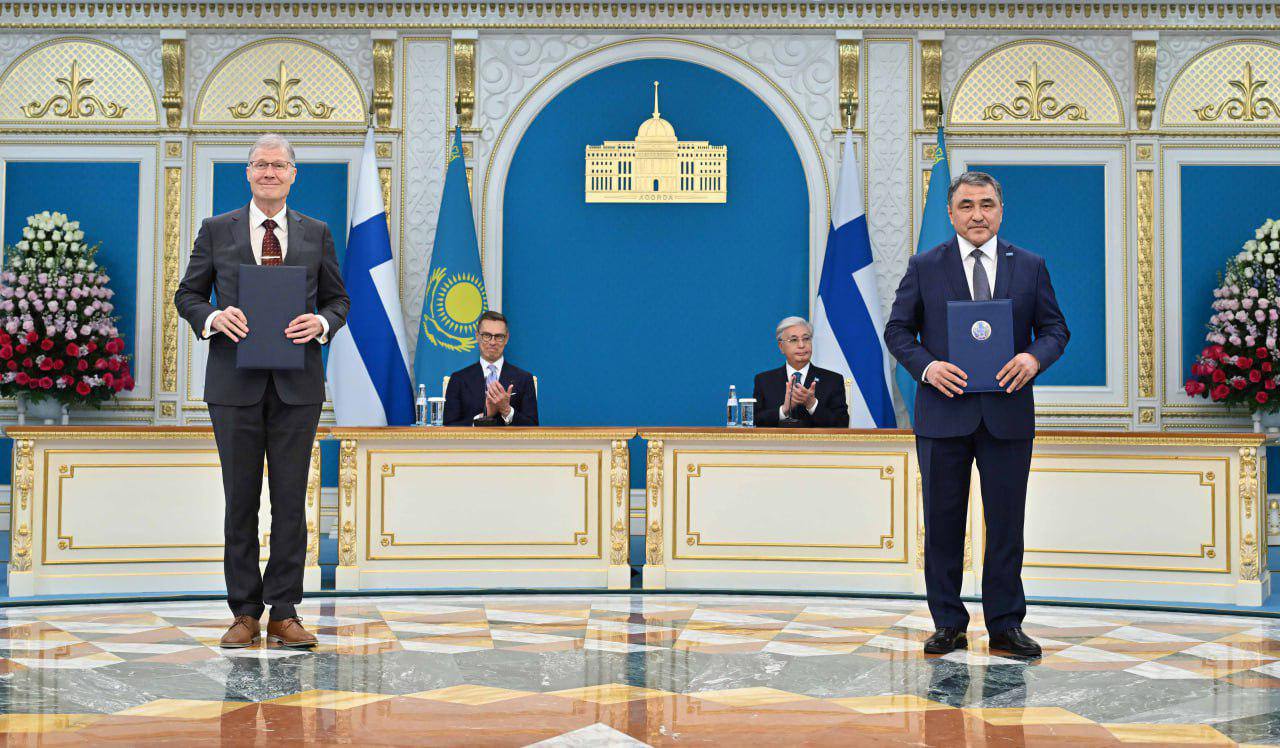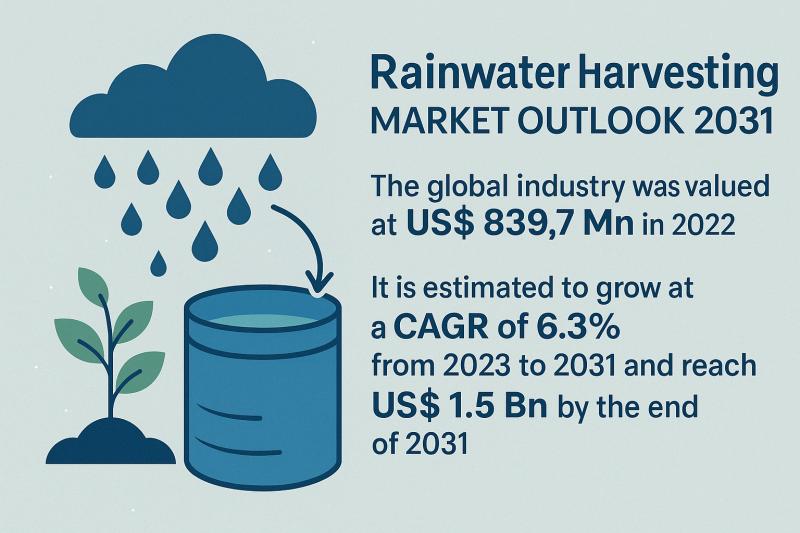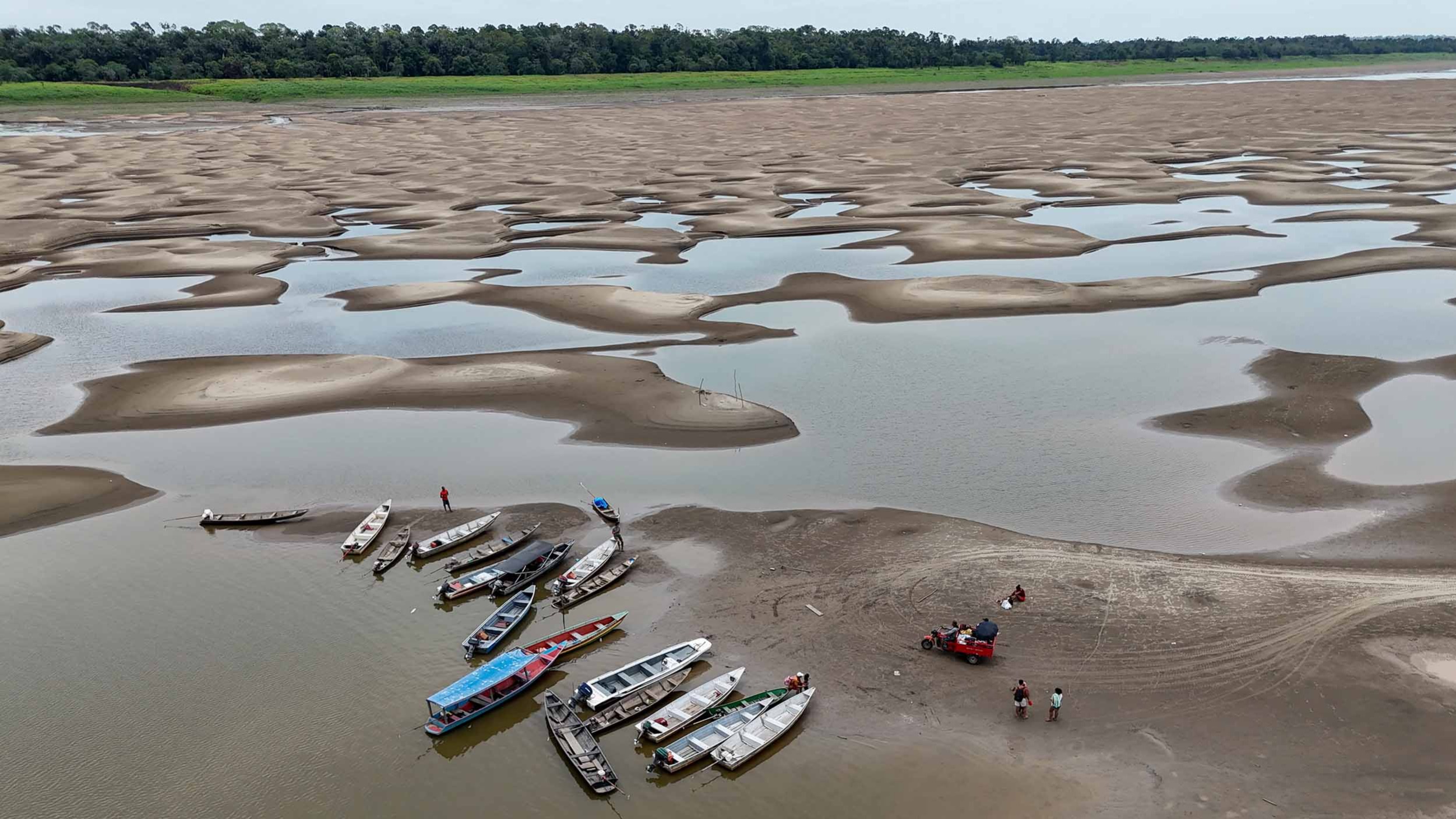Kazakhstan and Finland join forces to advance water resource management – Trend News Agency

Kazakhstan and Finland Forge Partnership to Advance Sustainable Water Management Aligned with SDGs
Kazakhstan and Finland have formalized a strategic partnership focused on the sustainable management of water resources, directly addressing the United Nations Sustainable Development Goals (SDGs). A Memorandum of Understanding was signed between Kazakhstan’s Ministry of Water Resources and Irrigation and Finland’s Ministry of Agriculture and Forestry during an official presidential visit. This collaboration exemplifies the principles of SDG 17 (Partnerships for the Goals) by leveraging international cooperation to achieve SDG 6 (Clean Water and Sanitation).
Core Objectives of the Memorandum of Understanding
The agreement establishes a framework for comprehensive cooperation across several key areas critical to achieving water security and sustainability. The partnership is designed to facilitate the exchange of best practices and advanced technologies to address Kazakhstan’s water sector challenges.
Enhancing Water Security and Infrastructure (SDG 6 & SDG 9)
A primary focus of the collaboration is the modernization and efficient management of water systems, which aligns with targets under SDG 6 for universal access to clean water and SDG 9 for resilient infrastructure. Key initiatives include:
- Modernizing national water infrastructure to improve reliability and reduce waste.
- Enhancing the efficient utilization and management of all water resources.
- Developing and implementing industrial water treatment and reuse technologies to promote sustainable industrialization.
- Exchanging proven water conservation practices to support responsible consumption patterns, contributing to SDG 12 (Responsible Consumption and Production).
Building Resilience and Knowledge Capacity (SDG 13 & SDG 4)
The memorandum emphasizes building institutional and human capacity to manage climate-related water risks and advance scientific understanding, supporting SDG 13 (Climate Action) and SDG 4 (Quality Education).
- Climate Resilience: The parties will exchange expertise in the management of flood and drought risks, strengthening adaptive capacity to climate-related hazards.
- Data and Monitoring: Collaboration will focus on implementing innovations in data collection, digital accounting, and water monitoring for informed decision-making.
- Research and Training: The agreement includes provisions for joint scientific research and professional training initiatives, with a specific focus on groundwater management and water diplomacy.
Strategic Importance for Sustainable Development
According to Nurzhan Nurzhigitov, Minister of Water Resources and Irrigation of Kazakhstan, this partnership is foundational for projects aimed at introducing innovative solutions to modernize the nation’s water sector. The minister highlighted the value of Finland’s extensive experience in rational water management and sustainable use. This international cooperation is a critical step for Kazakhstan in adopting best practices to achieve its national sustainable development objectives, particularly those related to ensuring the availability and sustainable management of water and sanitation for all as outlined in SDG 6.
Analysis of Sustainable Development Goals in the Article
1. Which SDGs are addressed or connected to the issues highlighted in the article?
The article on the cooperation between Kazakhstan and Finland on water resource management directly addresses or connects to several Sustainable Development Goals (SDGs). The primary focus is on water, but the nature of the agreement, which involves international partnership, technology exchange, and infrastructure modernization, links to other goals as well.
- SDG 6: Clean Water and Sanitation: This is the most central SDG to the article. The entire memorandum is focused on ensuring the availability and sustainable management of water. The text explicitly mentions “management of water resources,” “water conservation,” “water treatment and reuse,” and managing water-related risks like floods and droughts.
- SDG 9: Industry, Innovation, and Infrastructure: The article highlights the goal of “modernizing water infrastructure” and implementing “innovations in data collection, digital accounting, and water monitoring.” This directly relates to building resilient infrastructure and fostering innovation.
- SDG 13: Climate Action: The agreement to “exchange expertise in the management of flood and drought risks” is a direct measure for climate change adaptation, which is a key component of SDG 13. These extreme weather events are often exacerbated by climate change.
- SDG 17: Partnerships for the Goals: The article is fundamentally about an international partnership. The signing of a “Memorandum of Understanding” between Kazakhstan and Finland to “exchange experience and best practices” and facilitate “scientific and technical partnerships” is a clear example of the global cooperation promoted by SDG 17.
2. What specific targets under those SDGs can be identified based on the article’s content?
Based on the specific actions and areas of cooperation mentioned in the article, several SDG targets can be identified:
- Under SDG 6 (Clean Water and Sanitation):
- Target 6.3: By 2030, improve water quality by reducing pollution, eliminating dumping and minimizing release of hazardous chemicals and materials, halving the proportion of untreated wastewater and substantially increasing recycling and safe reuse globally. The article’s mention of “development of industrial water treatment and reuse technologies” directly supports this target.
- Target 6.4: By 2030, substantially increase water-use efficiency across all sectors and ensure sustainable withdrawals and supply of freshwater to address water scarcity. The agreement’s aim to enhance “the efficient utilization and management of water resources” and “exchange of water conservation practices” aligns perfectly with this target.
- Target 6.5: By 2030, implement integrated water resources management at all levels, including through transboundary cooperation as appropriate. The memorandum itself, focusing on a holistic approach to water management from infrastructure to diplomacy (“groundwater management and water diplomacy”), is an instrument for implementing this target.
- Under SDG 9 (Industry, Innovation, and Infrastructure):
- Target 9.1: Develop quality, reliable, sustainable and resilient infrastructure… to support economic development and human well-being. The goal of “modernizing water infrastructure” as stated in the article is a direct contribution to this target.
- Under SDG 13 (Climate Action):
- Target 13.1: Strengthen resilience and adaptive capacity to climate-related hazards and natural disasters in all countries. The plan to “exchange expertise in the management of flood and drought risks” is a specific action aimed at building resilience against climate-related disasters.
- Under SDG 17 (Partnerships for the Goals):
- Target 17.6: Enhance North-South, South-South and triangular regional and international cooperation on and access to science, technology and innovation. The agreement is built on the “exchange of experience and advanced technologies” and “joint scientific research” between Finland and Kazakhstan.
- Target 17.7: Promote the development, transfer, dissemination and diffusion of environmentally sound technologies. The focus on “innovative approaches, and advanced solutions” and “innovations in data collection, digital accounting, and water monitoring” reflects this target.
- Target 17.9: Enhance international support for implementing effective and targeted capacity-building. The inclusion of “professional training initiatives” in the agreement is a form of capacity-building.
3. Are there any indicators mentioned or implied in the article that can be used to measure progress towards the identified targets?
The article does not mention official UN SDG indicators, but it implies several practical measures and activities that can serve as indicators of progress for the joint initiatives between Kazakhstan and Finland.
- For SDG 6 Targets:
- The implementation and adoption rate of “industrial water treatment and reuse technologies.”
- The development and application of new “water conservation practices.”
- The degree of implementation of “digital accounting, and water monitoring” systems.
- The establishment of new policies or strategies for “groundwater management” and “management of flood and drought risks.”
- For SDG 9 Targets:
- The number of “water infrastructure” projects modernized or initiated under the partnership.
- For SDG 13 Targets:
- The number of joint projects or strategies developed specifically for the “management of flood and drought risks.”
- For SDG 17 Targets:
- The number of “joint scientific research” projects undertaken.
- The number of “professional training initiatives” conducted and the number of professionals trained.
- The volume and type of “advanced technologies” and “best practices” exchanged and implemented.
4. Summary Table of SDGs, Targets, and Indicators
| SDGs | Targets | Indicators (as implied in the article) |
|---|---|---|
| SDG 6: Clean Water and Sanitation |
6.3: Improve water quality and increase reuse. 6.4: Increase water-use efficiency. 6.5: Implement integrated water resources management. |
– Implementation of industrial water treatment and reuse technologies. – Adoption of new water conservation practices. – Implementation of digital accounting and water monitoring systems. |
| SDG 9: Industry, Innovation, and Infrastructure | 9.1: Develop sustainable and resilient infrastructure. | – Number of water infrastructure projects modernized. |
| SDG 13: Climate Action | 13.1: Strengthen resilience to climate-related hazards. | – Development of joint strategies for flood and drought risk management. |
| SDG 17: Partnerships for the Goals |
17.6: Enhance cooperation on science, technology, and innovation. 17.7: Promote transfer of environmentally sound technologies. 17.9: Enhance capacity-building. |
– Number of joint scientific research projects. – Number of professional training initiatives conducted. – Volume of advanced technologies and best practices exchanged. |
Source: trend.az
What is Your Reaction?
 Like
0
Like
0
 Dislike
0
Dislike
0
 Love
0
Love
0
 Funny
0
Funny
0
 Angry
0
Angry
0
 Sad
0
Sad
0
 Wow
0
Wow
0













































































